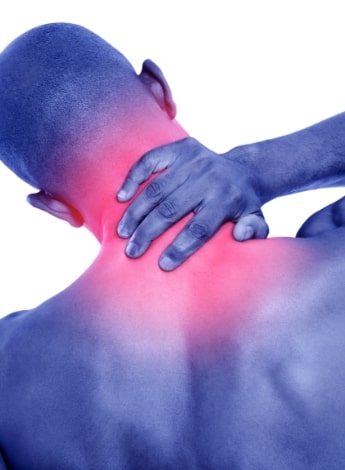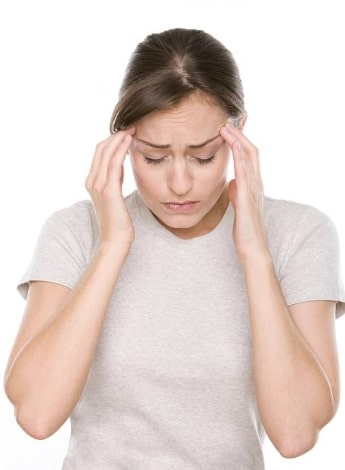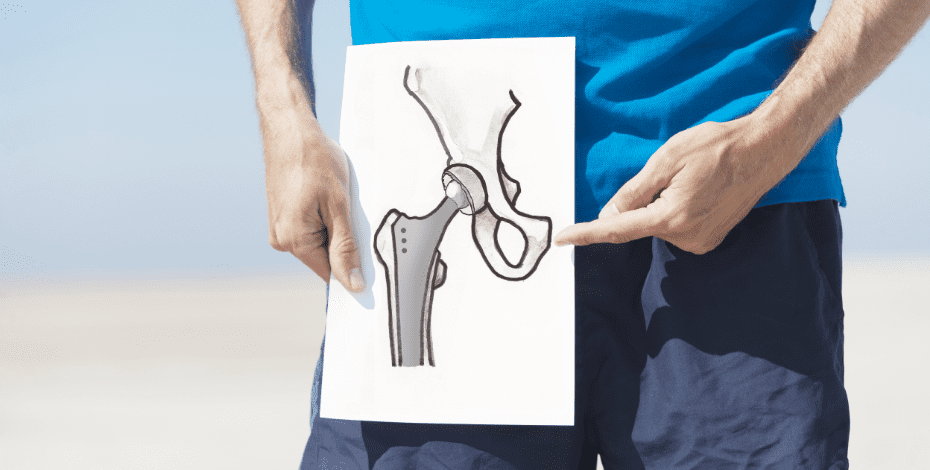
Acupuncture and dry needling for musculoskeletal pain

Dr Panos Barlas, Jonathan Wray, Jenny Lucy, Micky Yim and Samir Somaiya present five discussion points about acupuncture and dry needling in reducing pain in musculoskeletal conditions.
1. Acupuncture has evolved over time
Decades of research on acupuncture and related techniques have shown that the sensory stimuli evoked by needling are responsible for specific physiological responses involving both analgesic and autonomic reflexes.
These phenomena explain clinical observations of analgesia and mood effects as well as anti-inflammatory and healing responses following needle stimulation.
The responses are predictable and obey simple rules with regard to the intensity, duration and location of stimulation.
Therapists with appropriate training can harness these reflexes to address specific clinical problems such as pain and mood disorders.
Clinical trials where characteristics of treatment were analysed show that components such as duration, intensity and repetition of stimulation are more important for the success of the treatment than acupuncture point selection.
As a method of pain control, acupuncture provides a controlled, safe, measurable means of applying sensory stimulation.
It is superior to modalities such as interferential therapy, manual (ischaemic) compressions, transient needling applications, instrumented soft tissue mobilisation and shockwave therapy and, when compared with a modality where a specific machine is required, is cost-effective.
Acupuncture is an effective means of delivering sensory stimulation, which can have meaningful clinical benefits for patients.
2. Acupuncture and dry needling are effective non-pharmacological treatments for neck pain
Neck pain is among the most prevalent of musculoskeletal pain conditions worldwide, resulting in substantial disability and economic burden (Korthals-de Bos et al 2003).

Acupuncture and dry needling reduce pain and inflammation in people with neck pain disorders.
Acupuncture and dry needling have clinically relevant treatment outcomes for neck pain disorders (Mejuto-Vazquez et al 2014, Vickers et al 2018) due to the effects on multiple systems of the body (Gattie et al 2017).
Centrally, acupuncture and dry needling activate descending modulatory pain mechanisms in the brain and spinal cord (Dougherty et al 2009).
Locally, they have an effect on chemical mediators associated with pain and inflammation (Sánchez-Infante et al 2021).
The effectiveness appears to be higher for musculoskeletal pain in the upper body and the effects are superior to sham treatment (Vickers et al 2018).
Improvements in muscle contractile properties and neck range of motion have also been noted after as little as two treatments (Llamas-ramos et al 2014, Mejuto-Vazquez et al 2014).
Impairments in sensory motor control relating to the cervical spine are often observed in people with neck pain (Treleaven 2017).
Dry needling has been shown to improve joint position error and range of motion in patients with neck pain after just one treatment and may be an important part of a multimodal treatment approach in this patient population (Murillo et al 2021).
3. Acupuncture is an effective part of physiotherapy treatment for migraines and chronic tension-type headaches
Physiotherapists in musculoskeletal practice encounter clients suffering with migraines and chronic tension-type headaches on a regular basis.

Acupuncture plays a potentially important role in treatment plans for migraines and chronic tension-type headaches.
Research validates the use of acupuncture in a physiotherapy treatment plan for this cohort.
Acupuncture seems to be at least as effective as conventional preventative medication for migraines and is safe, long-lasting and cost-effective (Witt et al 2008, Da Silva 2015).
It reduces migraine frequency, is superior to sham and may be as effective as prophylactic drugs.
Subgroup analysis showed a larger effect size with 16 or more treatments than with 12 treatments or fewer (Linde et al 2016).
Acupuncture has a potentially important role as part of a treatment plan for migraines, tension-type headaches and several different types of headache disorders.
In response to migraines, acupuncture is superior to sham treatment both in effectiveness and in reduced risk of reoccurrence (Yang et al 2016).
Its cost-effectiveness has been demonstrated by Kim et al (2012) and by Coeytaux and Befus (2016).
It is effective for frequent, episodic and chronic tension-type headaches (Linde et al 2016) and has been included in the NICE guidelines for headaches since 2012.
4. Superficial needling may have an effect as strong as acupuncture
Placebo is supposed to be inert, inducing only non-specific physiological and emotional changes in randomised controlled trials.
Dincer & Linde (2003) reviewed 47 randomised controlled trials in which trial patients received either ‘true’ acupuncture or sham interventions, such as:
- superficial needling of the acupoints for the treated condition
- needling acupoints not for the treated condition
- needling non-acupoints
- mimic acupuncture without skin penetration
- pseudo-interventions—eg, switched-off laser acupuncture device.
Superficial needling similar to acupuncture may have an effect as strong as acupuncture in various physiological responses due to sensitisation of the peripheral and central nervous systems.
In patients who do not suffer from sensitisation, repeated nociceptive input from nearby myotome will have similar effects to needling in the affected myotome.
Pain inhibition in acupuncture affects all the afferent nerve fibres, while superficial needling probably activates two types of C tactile fibres on the skin.
Pain and sympathetic inhibiting mechanisms in the limbic structures may result from acupuncture and superficial needling.
Experimental and clinical studies have shown that placebo controls used in acupuncture are not necessarily inert from a physiological perspective.
Instead of reducing bias, these trials’ design may introduce a bias against the treatments being tested.
5. Acupuncture helps to reduce muscle and joint pain
Acupuncture is a therapeutic modality involving the insertion of solid filiform needles.

Dry needling reduces pain caused by musculoskeletal conditions, with effectiveness lasting up to three weeks.
Dry needling is a modern adaptation of traditional acupuncture using current biomedical understanding and research evidence (Zhou et al 2015).
Dry needling is used to treat myofascial trigger points, which are described as localised hypersensitive spots in a palpable, taut band of muscle and when palpated reproduce a patient’s pain.
Vickers et al 2012 conducted a systemic review of randomised controlled trials of acupuncture for chronic pain, with a total of 17,922 patients analysed.
In all eligible randomised controlled trials, acupuncture was superior to both sham treatment and non-acupuncture controls for each pain condition.
Patients who received acupuncture had less pain.
Gattie et al 2017 compared the long-term effects of acupuncture.
During the 12 weeks treatment duration, it was found that dry needling appears to be effective in reducing pain, increasing the pressure pain threshold and improving function, when compared to control or sham treatment, but not in the long term.
A systematic review and meta-analysis (Sánchez-Infante et al 2021) found dry needling to be greatly effective in reducing pain in subjects with musculoskeletal conditions, its effectiveness lasting up to three weeks after treatment.
Click here for an infographic poster version of this article.
>> Dr Panos Barlas is a Principal Research Fellow at the Jamieson Trauma Institute, MetroNorth Hospital and Health Service in Brisbane, Queensland.
>> Jonathan Wray, APAM MACP, is a Specialist Musculoskeletal Physiotherapist (as awarded by the Australian College of Physiotherapists in 2020). He is the presenter of the APA’s Dry Needling Physiotherapy Level 1 course in Western Australia.
>> Jenny Lucy, APAM, is a Registered Physiotherapy Acupuncturist (Physiotherapy Acupuncture Association of New Zealand) and a private practitioner working at Therapy Plus, Wheatbelt Health Network in Northam, Western Australia. Jenny is the current chair of the Acupuncture and Dry Needling national group and is a tutor on the APA’s Dry Needling Physiotherapy Level 1 course in Western Australia.
>> Micky Yim, APAM, has been trained in traditional acupuncture and undertook training in Japan. She has a special interest in musculoskeletal complaints, women’s health and fertility, and paediatric disorders. She works at Edgecliff Physiotherapy Sports and Spinal Centre in New South Wales.
>> Samir Somaiya, APAM, is the vice-chair of the Acupuncture and Dry Needling national group, holds a master’s degree in orthopaedic, sports and manual therapy from the University of South Australia and works in his private practice.
- References
Acupuncture and Chronic Musculoskeletal Pain. Current Rheumatology Reports (2020) 22:80(https://doi.org/10.1007/s11926-020-00954-z)
Acupuncture alleviates chronic pain and comorbid conditions […] J.-H. Jang et al.·162, Pain (2021) 514–530 http://dx.doi.org/10.1097/j.pain.0000000000002031
Acupuncture for Chronic Pain: Update of an Individual Patient Data Meta-Analysis. JPain, Vol 19, No 5, 2018: pp 455-474
Biotext. Alternative therapies and Department of Veterans’ Affairs Gold and White card arrangements. In: Australian Government Department of Veterans’ Affairs, editor: Australian Government Department of Veterans’ Affairs; 2010.
Chon TY and Lee MC 2013, Acupuncture; Mayo Clin Proc. 2013;88(10):1141-1146
Chronic pain (primary and secondary) in over 16s: assessment of all chronic pain and management of chronic primary pain. https://www.nice.org.uk/guidance/ng193
Cleland JA, Arias-Buría JL, Fernández-de-Las-Peñas C, Plaza-Manzano G. Effects of Trigger Point Dry Needling for Nontraumatic Shoulder Pain of Musculoskeletal Origin: A Systematic Review and Meta-Analysis. Phys Ther. 2021 Feb 4;101(2):pzaa216. doi: 10.1093/ptj/pzaa216. PMID: 33340405.
Coeytaux RR, Befus D. Role of Acupuncture in the Treatment or Prevention of Migraine, Tension-Type Headache, or Chronic Headache Disorders. Headache. 2016 Jul;56(7):1238-40.
Da Silva AN. Acupuncture for migraine prevention. Headache. 2015 Mar;55(3):470-3.
Dincer, F. and Linde, K. ‘Sham interventions in randomized clinical trials of acupuncture—a review.’ Complementary therapies in medicine, Dec. 2003, 11 (4): 235–42. https://pubmed.ncbi.nlm.nih.gov/15022656/
Dougherty DD, Kong J, Webb M, Bonab AA, Fischman AJ, Gollub RL. NIH Public Access. 2009;193(1):63–8.
Gattie, E., Cleland, J. and Snodgrass, S. The Effectiveness of Trigger Point Dry Needling for Musculoskeletal Conditions by Physical Therapists: A Systematic Review and Meta-analysis. 2017 Mar;47(3):133-149. doi: 10.2519/jospt.2017.7096. Epub 2017 Feb 3. PMID: 28158962.
Hempel S, Taylor SL, Solloway MR, Miake-Lye IM, Beroes JM, Shanman R, et al. VA Evidence -based Synthesis Program Reports. Evidence Map of Acupuncture. Washington (DC): Department of Veterans’ Affairs; 2014.
Kim, S.Y., Lee, H., Chae, Y., Park, H.J., Lee, H. ‘A systematic review of cost-effectiveness analyses alongside randomised controlled trials of acupuncture.’ Acupunct Med. 2012 Dec;30(4):273–85.
Korthals-de Bos I, Howing J, Van Tulder M, Rutten-van Molken M, Adèr HJ, Vet HCW De, et al. Cost Effectiveness of Physiotherapy, Manual Therapy and general Practitioner Care for Neck Pain: Economic Evaluation Alongside a Randomised Controlled Trial. Prim Care. 2003;326(April):1–6
Lang-Lasting Analgesia following TENS and Acupuncture: Spinal Mechanisms beyond Gate Control. Proceedings oi the 9th World Congress on Pain, Progress in Pain Research and Management, I Vol. 16
Linde K, Allais G, Brinkhaus B, Fei Y, Mehring M, Vertosick EA, et al. Acupuncture for the prevention of episodic migraine. Cochrane Database Syst Rev. 2016(6):Cd001218.
Linde K, Allais G, Brinkhaus B, Fei Y, Mehring M, Shin BC, et al. Acupuncture for the prevention of tension-type headache. Cochrane Database Syst Rev. 2016;4:Cd007587.
Llamas-ramos R, Martin-Pecos D, Gallego-Izquierdo T, Llamas-Ramos I, Plaza-Manzano G, Ortega-Santiago R, et al. Comparison of the Short Term Outcomes Between Trigger Point Dry Needling and Trigger Point Manual Therapy For the Management of Chronic Mechanical Neck Pain: A Randomized Control Trial. 2014;44(11):852–62
Lund Irene, Naslund Jan, Lundeberg Thomas, Chinese Medicine 2009 - Minimal acupuncture is not a valid placebo control in randomised control trails of acupuncture : a physiologist’s perspective; Licensee BioMed Central Ltd. Stockholm, Sweden
Mejuto-Vazquez M, Salom-Moreno J, Ortega-Santiago R, Truyols-Dominguez S, Fernandez-De-Las-Pena C. Short-Term Changes in Neck Pain, Wide Spread Pressure Pain Sensitivity, and Cervical Range of Motion After the Application of Dry Needling in Patients With Acute Mechanical Neck Pain: A Randomized Control Trial. J Orthop Sport Phys Ther. 2014;44(4):252–61
Murillo C, Treleaven J, Cagnie B, Peral J, Fallah D, Lluch E. Effects of Dry Needling of the Obliquus Capitus Inferior on Sensory Motor Control and Cervical Mobility in People With Neck Pain: ADouble Blind Randomized Sham-Controlled Trial. Brazilian J Phys Ther [Internet]. 2021;(xxxx). Available from: https://doi.org/10.1016/j.bjpt.2021.07.005
Navarro-Santana MJ, Gómez-Chiguano GF, Cleland JA, Arias-Buría JL, Fernández-de-Las-Peñas C, Plaza-Manzano G. Effects of Trigger Point Dry Needling for Nontraumatic Shoulder Pain of Musculoskeletal Origin: A Systematic Review and Meta-Analysis. Phys Ther. 2021 Feb 4;101(2):pzaa216. doi: 10.1093/ptj/pzaa216. PMID: 33340405.
Optimized acupuncture treatment (acupuncture and intradermal needling) for cervical spondylosis–L. Chen et al. Pain·162 (2021) 728–739 http://dx.doi.org/10.1097/j.pain.0000000000002071
Sanchez-Infante J, Bravo-Sanchez A, Jimenez F, Abian-Vicen J. Effects of dry needling on mechanical and contractile properties of the upper trapezius with latent myofascial trigger points : A randomized controlled trial. Musculoskelet Sci Pract. 2021;56(September).
Sánchez-Infante J, Navarro-Santana MJ, Bravo-Sánchez A, Jiménez-Diaz F, Abián-Vicén J. Is Dry Needling Applied by Physical Therapists Effective for Pain in Musculoskeletal Conditions? A Systematic Review and Meta-Analysis. Phys Ther. 2021 Mar 3;101(3):pzab070. doi: 10.1093/ptj/pzab070. PMID: 33609356.
The Effects of Acupuncture on Chronic Knee Pain Due to Osteoarthritis. J Bone Joint SurgAm. 2016;98:1578-85 d http://dx.doi.org/10.2106/JBJS.15.00620
Treleaven J. Dizziness, Unsteadiness, Visual Disturbances, and Sensorimotor Control in Traumatic Neck Pain. 2017;47(7):492–502
Vickers, A.J. et al. Acupuncture for Chronic Pain: Update of an Individual Patient Data Meta-Analysis. 2018;19(5):455–74.
Vickers Andrew J, DPhil; Angel M. Cronin, MS; Alexandra C. Maschino, BS; George Lewith, MD; Hugh MacPherson, PhD; Nadine E. Foster, DPhil; Karen J. Sherman, PhD; Claudia M. Witt, MD; Klaus Linde, MD: Acupuncture for Chronic Pain Individual Patient Data Meta-analysis, ARCH INTERN MED/ VOL 172 (NO. 19), OCT 22, 2012.
Witt, C. M., Reinhold, T., Jena, S., Brinkhaus, B., Willich, S.N. Cost-Effectiveness of Acupuncture Treatment in Patients With Headache. April 1, 2008 1468-2982.2007.01504.
Yang Y, Que Q, Ye X, Zheng G. Verum versus sham manual acupuncture for migraine: a systematic review of randomised controlled trials. Acupunct Med. 2016 Apr;34(2):76-83.
Zhou Kehua, Ma Yan, Brogan Michael S 2015; Dry needling versus acupuncture: the ongoing debate, Acupunct Med 2015;33:485–490. doi:10.1136/acupmed-2015-010911
© Copyright 2024 by Australian Physiotherapy Association. All rights reserved.





